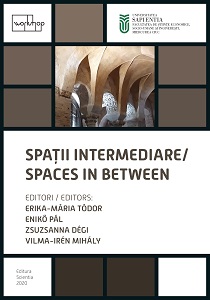THE REPRESENTATION OF THE CHARACTERISTICS OF MINORITY IDENTITY IN PÉTER HUNČÍK’S NOVEL BORDERLINE CASE
THE REPRESENTATION OF THE CHARACTERISTICS OF MINORITY IDENTITY IN PÉTER HUNČÍK’S NOVEL BORDERLINE CASE
Author(s): Gabriella Mádi
Subject(s): Identity of Collectives
Published by: Scientia Kiadó
Keywords: minority Hungarian literature; identity; socio-linguistics;
Summary/Abstract: In Central and Eastern Europe, there have been several intermediary regions in history where different ethnicities have been living together, many of them in minority. The question of national affiliation is of key importance for an ethnic group living in minority as it helps the members of the group define themselves against other ethnic groups and the majority nation. We shall look at how the writer’s environment, including the features of minority identity, can be traced in Hunčík’s novel.Péter Hunčík, born in Šahy (Hungarian: Ipolyság) is a Hungarian psychiatrist, ethnopsychologist, and writer, who currently lives in Žitný ostrov (Hungarian: Csallóköz). His first novel is Borderline Case, which was awarded the Sándor Bródy Prize. It takes place in a border settlement, which is not named in the work; however, it is obvious from the text that it could be placed somewhere near Šahy. Concerning the genre, the story is a family saga about three generations of a family, using anecdotal narrative combined with unique humour while depicting the beauty and challenges of minority existence in an entertaining way.The purpose of the study is to show how a Hungarian writer in Slovakia depicts the everyday life of the inhabitants of a multinational region in the light of the problematic interpretation of their ethnic identity.
Book: SPAŢII INTERMEDIARE / SPACES IN BETWEEN
- Page Range: 151-164
- Page Count: 14
- Publication Year: 2020
- Language: English
- Content File-PDF

